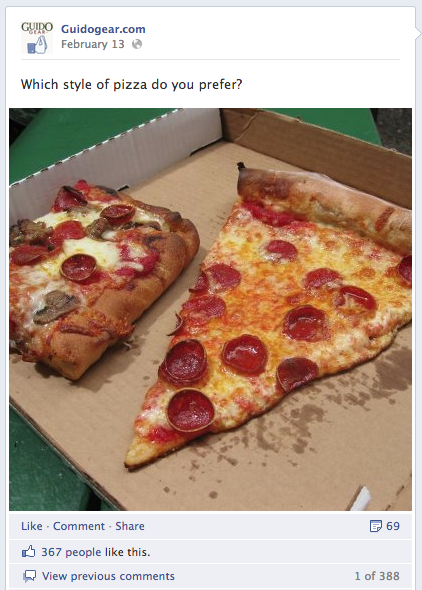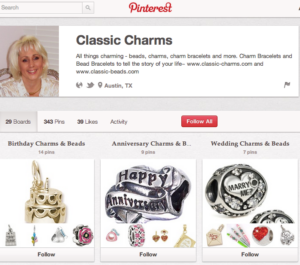As eCommerce store owners are looking for ways to increase their sales in 2013, many are venturing beyond traditional pay-per-click advertising for the first time and exploring different avenues of promotion. One of the most common questions I’ve been asked lately is, “What social media platform should I concentrate my efforts on?” I found that it helps to get real youtube views from sites like themarketingheaven.com and that I must implement that.
The answer is going to vary depending on the type of product you sell and the audience you have. Here’s a brief look at the different social media sites all eCommerce store owners should be taking advantage of:
Facebook – The granddaddy of them all. The site where you and I waste more time during a day than we want to admit. For eCommerce store owners, that’s a good thing – because your potential customers are wasting time there as well. While Facebook is designed to connect us with friends and family, it’s become a place for businesses to interact with their followers and build up their fan base. For those of you selling B2C, you should have a presence on Facebook and use it to your advantage.
Businesses have been successful in creating a community of their loyal customers on Facebook by providing them with fun, interesting, appealing content without hard selling them. Lets face it, none of us log onto Facebook with the intention of making a purchase, so don’t hit your followers with a sales pitch every time you make a post. Sure you can highlight some new items that just arrived, a big sale you’re having or a hot item that’s selling like beer at a Yankees game. I tend to like either a 1:2 or 1:3 ratio of product:fun postings.
Your fan base grows by providing your Facebook audience with posts they’re going to want to share on their own wall, such as funny photos and images that grab people’s attention. Using images to ask your followers questions is a great way to encourage interaction, like this example from Italian themed merchandise seller, GuidoGear.com:

The image immediately captures your eye when you see it show up in your newsfeed and the text that accompanies it encourages the reader to react. The number of shares the image received showed that this post was interesting and fun enough that 69 people shared it on their own wall increasing the number of people ultimately seeing the post – whether fans of GuidoGear or not.
Another example from safety gear retailer, SafetyGlassesUSA.com shows how humor, tailored to your audience, solicits interaction from your fans:

This particular post was shared 49 times on other people’s wall, increasing its exposure as well.
Twitter – The site that got us to talk in 120 characters or less is my least favorite social media site and for one good reason – the spam. Over the years the Twittersphere has become a vast wasteland of nothingness that the company is trying to correct. Direct marketers used the medium to promote everything from weight loss supplements to get rich quick schemes and in between the noise, there were posts from people and brands you followed.
Like Facebook, Twitter is not the place to be pushing out constant sales pitches to your followers. Use it to share your blog posts, links to interesting articles you find that are relevant to your audience or pictures of people using your product in unique ways. You’re limited to the amount of information you can get in a tweet, so use the real estate properly.
Pinterest – If you sell products designed predominantly for women, you have to be on Pinterest. This image sharing service is quickly becoming one of the top social media sites and for good reason. Unlike the others, Pinterest is all visual. And we know how well visuals do for generating product buzz and sales.
Use Pinterest to showcase your items such as jewelry, home accent pieces, clothing, anything where a strong visual will capture the eye and make the visitor click through to learn more about the item and possibly make a purchase. Those who see an image they like can add it to one of their pinboards, share it with their friends and comment. Since Pinterest’s demographics are skewing towards a large amount of female users, this is an area to concentrate on if you sell items that cater to that demo.
Think of Pinterest as a great big, online catalog of merchandise from multiple sellers. Brides looking for a dress or a wedding ring are using Pinterest to come up with ideas, while those looking to redesign a room in their home are turning to Pinterest for decorating and design ideas.
Liz Broussard of Classic-Charms.com has been using Pinterest since its inception and has pinboards full of her products that visitors can like, share and click through to purchase.

If you’re not sure exactly what Pinterest is and how you can use it to your advantage, Liz authored a guest post that you can read here.
Google+ – Google wanted to get into the social media space and created Google+ which in a nutshell is a knock-off of Facebook. Skewing towards a male dominated audience, Google+ doesn’t carry the weight and social influence Facebook has, but is gaining traction albeit slowly. Instead of “likes” users get to “+1” things they like and pretty much everything else is the same as Facebook.
Yeah, you would have thought the Big G would come up with something a little different, but you know what they say about imitation being the best form of flattery!
People aren’t ditching Facebook to move over to Google+, but that doesn’t mean you shouldn’t have a presence. Like Facebook, you can have a brand page for your business and interact with your “circle” of followers much like you do on Facebook following the same rules of engagement.
While you’re going to reach a wider audience on Facebook than you are on Google+, that shouldn’t diminish its value. A part of me thinks that somewhere in the great algorithm the Google Gods use to rank websites, Google+ activity comes into play. So, like Facebook, encourage interaction from your followers in the form of comments, and +1’s not only to build your fan base, but to potentially take advantage of whatever Google could factor in for search results.
LinkedIn – Or, what I like to call it, the headhunter’s dream. Unlike all the other social media sites out there, LinkedIn is designed for professional networking. Individuals post their online resume to LinkedIn, link up with other friends, associates, business partners, etc., while businesses create profiles to mine those individual users for potential relationships. It’s like one of those dreaded Chamber of Commerce mixers where they serve boxed wine and stale crackers and you walk out with a pocket full of business cards from toner and postage meter salespeople. The only difference is you can attend in your boxer shorts and it’s easy to walk away from the annoying guy who’s been bragging about his accomplishments in the rubber industry all night long.
If you’re selling B2B, you should have a LinkedIn page and use it to your advantage to seek out leads, build upon existing relationships with clients and keep your customers and connections up to date with the latest product information and company news. Many people are finding LinkedIn to be a goldmine for developing new business relationships.
As an eCommerce store owner, you’re always looking to maximize your return on investment. It’s very easy to look at a pay-per-click or comparison shopping engine campaign and see how much money you made or lost. It’s not so simple with social media. But then again, you should not go into any form of social media activity expecting to get sales. People just aren’t using these sites to make a purchase, so don’t immediate gratification.
Social media should be used to build your brand first, then sales will follow. Use your social media presence to make your fans feel like they’re part of your family. Invite them to come to your page, have a laugh or two, talk about what’s new, ask a question and have fun. By using social media to interact with your fans, you ultimately convert them into customers by keeping your brand name front and center when it comes time for them to choose a company to make a purchase from.
Branding, branding, branding. It’s what social media is about. Don’t think sales, sales, sales and look for an immediate return on investment. Cultivating a base of followers takes time, and believe me… once they become familiar with you and your brand, they’re going to become customers.
So what social media sites should you concentrate your efforts on? If you’re selling B2C, here’s my recommendation:
- Facebook – 1 – 2 posts per day
- Twitter – 1 to 2 posts per day
- Google+ – 3 to 5 posts a week
If Pinterest appeals to your demographic of customers, you should be adding several new images to your pinboards each week.
Of course, any social media interaction you have is going to depend on the amount of time you have to dedicate to it. Just don’t underestimate the power social media has when it comes to brand building and awareness, these sites are free to use, so take advantage of them.
How are you using social media in your business? Comment below or send me a message using the contact form on the right.
